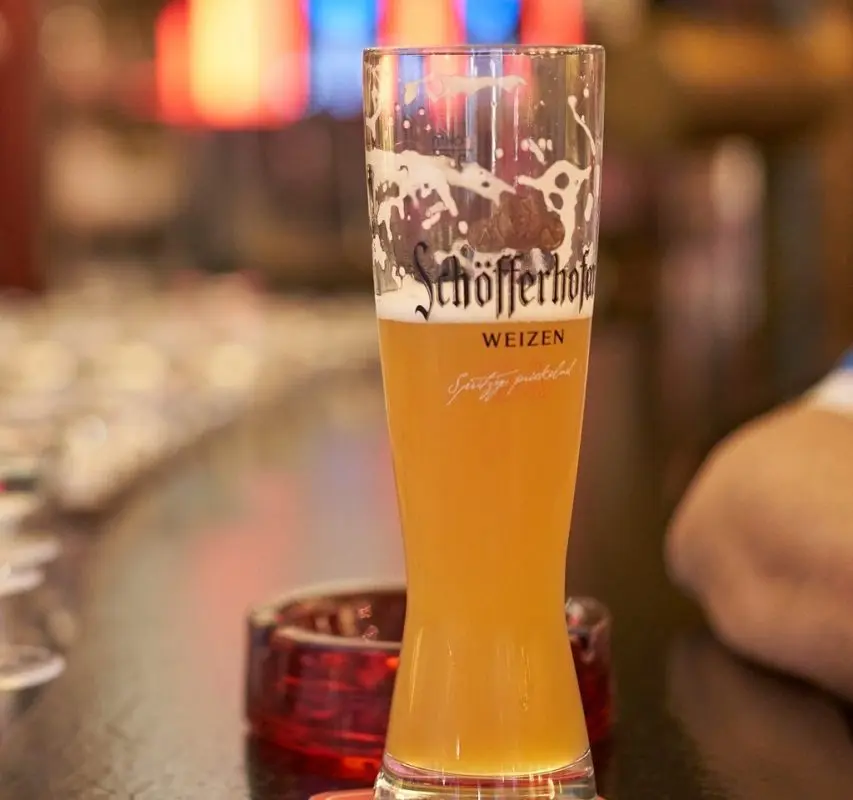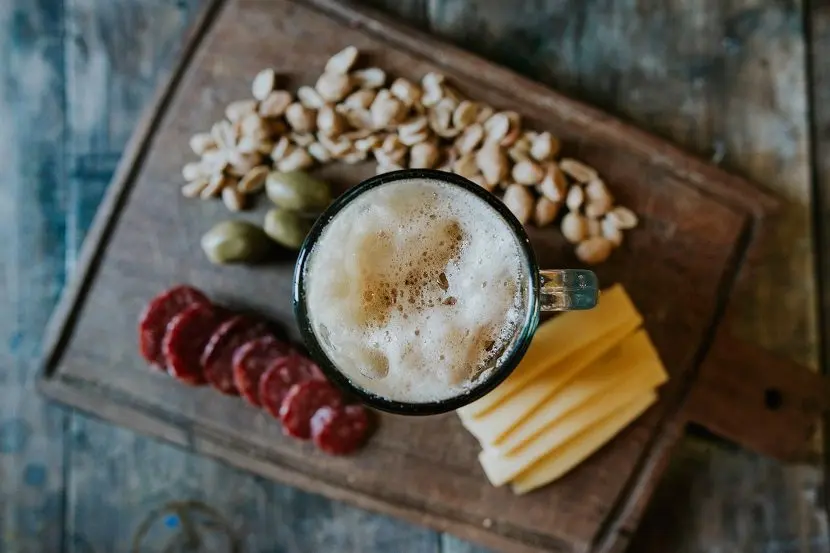Contents
Weizenbier is a top-fermented wheat beer brewed from a mixture of wheat and barley in varying proportions. The most famous types of this drink are produced in Germany and Belgium, where it has been brewed since the Middle Ages. Wheat beer has no hop bitterness and is dominated by spicy, lemony or fruity tones.
Historical information
Wheat beer was not brewed in Bavaria until 1516. Transferring valuable grain was considered a sin, about which a corresponding decree was issued, the essence of which is conveyed in a folk saying: “Wheat for bread, barley for beer, oats for horses.” The situation was changed by the Bavarian Duke Ludwig X of the Wittelsbacher dynasty, who declared Weizenbier a drink for noblemen and issued a decree establishing a state monopoly on production.

Weizenbier was to the taste of Emperor Maximilian I. The monarch ordered wheat beer to be brewed at his Hofbräuhaus factory in Munich, and gave the Bavarian dukes the right to sell licenses to private breweries. At first, the production area was limited to Munich, but gradually spread beyond its borders. I bought the drink with pleasure to know, so the licenses were very expensive.
The production of Weizenbier was not hindered in any way by the law on the purity of brewing, according to which beer was supposed to be made from barley, hops and water. Wheat beer was considered elite for a long time, and therefore the general rules did not apply to it. The drink retained its status until the late 1880s. By this time, the inventor and engineer Karl Linde had launched the mass production of refrigeration machines, which launched the victorious march of the lager.
Wheat beer production technology
Weizenbier is brewed from a combination of barley and wheat malt, the latter in the wort can be up to 70%. German standards require that only top-fermenting yeast be used for fermentation. In production, special strains are used that contribute to the production of phenols, which brings shades of banana and cloves to the drink. A rich flavor bouquet is achieved with the help of fragrant herbs.
Young beer, as a rule, matures in bottles. In this case, glass containers are stored for a week indoors at a temperature of +15-20 °C. Then comes the cold fermentation phase, which lasts 14 days. During this period, the temperature is reduced to +10 °C. The maturation process in tanks is about the same, but in the second phase, manufacturers prefer to maintain zero temperature in the workshops. The cost of the product is reduced, but as a result, the draft beer is less aromatic. After fermentation, the drink is filtered and sediment is removed to increase shelf life.

Types of wheat beer
One of the most famous types of Bavarian beer is Hefeweizen (Hefeweizen) or Hefeweißbier. The factory founded by Emperor Maximilian I was the first to start producing it. In fact, this is an unfiltered wheat beer, to which yeast gives a cloudy look and bitter notes. The aroma of Hefeweizen is dominated by fruity and spicy tones, and banana, cloves and vanilla are felt in the taste.
Witbier (Witbier) or Blanche (Blanche) is a Belgian beer brewed from barley malt and unmalted wheat in a proportion of 50/50. Coriander, orange peel, chamomile, cumin and cinnamon are added to the must. This composition has developed historically – in the XIV century in Flanders, hops were imported, so brewers replaced it with a set of herbs and spices. Witbier is opaque due to the lack of filtration and is characterized by high carbonation, pleasant acidity, complex aroma and rich taste.

Other types of wheat beer:
- Dunkelweizen (Dunkelweizen) – Bavarian variety, dark beer due to the addition of roasted malt;
- Kristallweizen (Kristallweizen) – carefully filtered and therefore crystal clear;
- Weizenbock (Weizenbock) – strong beer made from a mixture of dark and light malt;
- Berliner Weize (Berliner Weisse) is a popular foamy drink in Berlin, brewed with the addition of lactic acid bacteria.
Wheat beer is also brewed by American craft breweries, which have already developed their own style, which is based on the Bavarian Weizenbier. The products of US enterprises are distinguished by stronger hop bitterness and pronounced malt tones. Fruit tones are kept to a minimum.
How to drink wheat beer
Weizenbier wheat beer is drunk slightly chilled from the tulip-shaped glasses of the same name. The glasses have a narrow heavy bottom for stability and tapering walls at the very top. This shape contributes to the formation of a beautiful and persistent foam cap. Pre-cooled glasses to reduce the intensity of foaming. It is customary to clink glasses with bottoms. Kristallweizen is cooled to 7-8 °C, Hefeweizen – to 8-9 °C to reveal the flavor bouquet. It is customary to eat German varieties with dried meat, fried sausages, and spicy stewed veal.
American Wheat Ale pairs well with fresh summer salads, cold turkey, ham and young cheeses.

Darker and more hoppy beers will suit cheddar and white fish.
Belgian varieties make a gastronomic pair with seafood dishes and fruit mixes.









